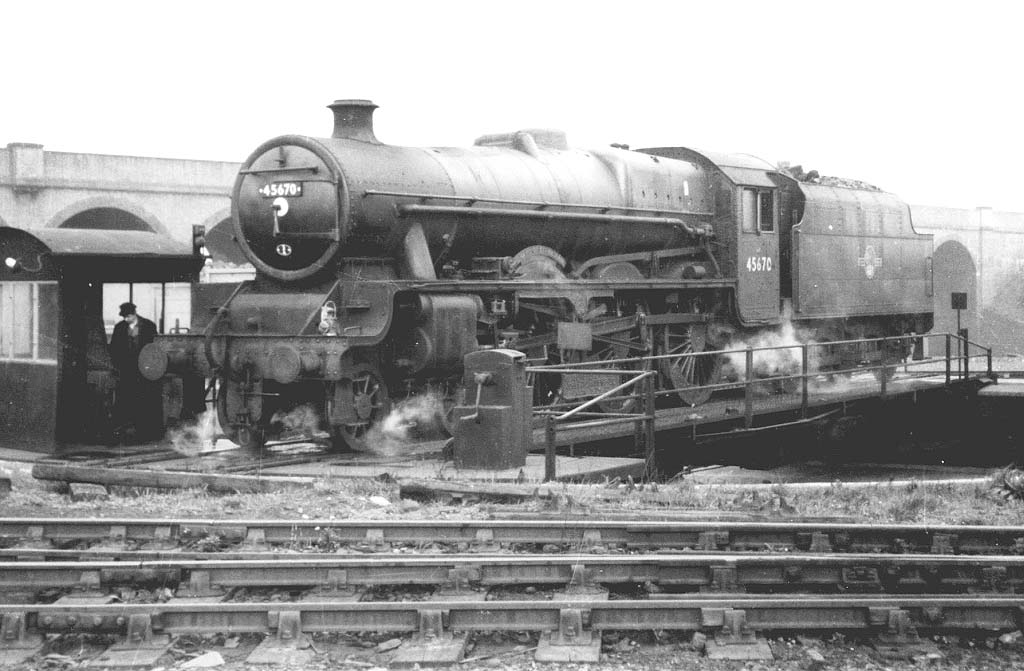 |
|
London North Western
Railway:

Midland
Railway:

Stratford
Midland Junction Railway
|

|
LMS Route: Rugby to Wolverhampton
LMS Route: Rugby to
Leamington
LMS Route: Rugby to Tamworth
LMS Route: Rugby to
Leicester
LMS Route: Rugby to Market Harborough
Rugby Station: lnwrrm2529a
 |
Close up of image 'lnwrrm2529' showing the driver of No
45670 operating Rugby's vacuum powered 55 foot turntable which has been built
during the 1934 modernisation of the yard. The winding arm on the right could
turn the table manually in case the vacuum operated equipment did not work.
Because of their configuration of boiler to the front with cab and tender or
bunker behind, steam locomotives needed a way to be turned so that the
locomotive faced the direction of travel. Whilst it was possible for
locomotives to run tender or bunker first, the locomotive was often limited as
to the speed that they could attain. In addition, the wind created running
backwards could make it very unpleasant for the crews with coal dust and rain
being blown into their faces. Most turntables consisted of a circular pit in
which the 'bridge' on which the locomotive stood rotated. The outer ends of the
bridge were typically supported by a rail running around the floor of the pit,
supplementing the central pivot. Because steam locomotives generally had vacuum
operated brakes, it was quite common for turntables to be operated by vacuum
motors worked from the locomotive's vacuum ejector or pump via a flexible hose
or pipe although a few manually and electrically operated examples exist.
 back back

|
